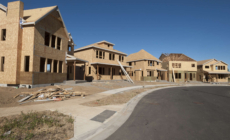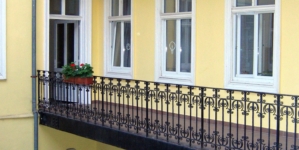-
Dolly Parton modified iconic Playboy bunny costume for ‘Bible-totin’ fans: author - 16 mins ago
-
Football Star Dominik Szoboszlai Welcomes First Child - 32 mins ago
-
Number of Americans Selling Their Home Hits Major Milestone - 38 mins ago
-
New Medicaid federal work requirements mean less leeway for states - 43 mins ago
-
TBT 2025 Championship Recap: Aftershocks Top Eberlein Drive To Claim Title - 48 mins ago
-
No Social Security Payment Is Being Paid This Week. Here’s Why - about 1 hour ago
-
Rangers’ Jacob deGrom Is Fastest to 1,800 Career Strikeouts in MLB History - 2 hours ago
-
Meghan Markle turns 44 as she works on new Netflix deal agreement: experts - 2 hours ago
-
Mercedes to Open Hungary’s Largest Car Factory Next Year - 2 hours ago
-
Woman Tries New Fruit in Bali—Horror at What’s Inside: ‘I’m on Antibiotics’ - 2 hours ago
Construction permits up by more than 40 percent
In the first half of 2025, 5,129 new dwellings were built, 15% fewer than a year earlier. The number of dwellings to be built based on issued construction permits and simple declarations was 12,830, 43% more than in the same period of 2024.
In the first half of 2025, 5,129 dwellings were put into use, representing a 15% decrease from the low base in the same period of the previous year.
In the capital, 14% fewer dwellings were built, in towns of country rank 34% fewer, and in villages 17% fewer. Only in smaller, non-county-rank towns did the number of dwellings put into use increase slightly (1.1%).
The territorial concentration of housing construction remains strong in the capital. Nearly half of Budapest’s 1,821 new dwellings were built in three districts: 319 new dwellings were put into use in District VIII, 379 in District IX, and 195 in District XI.
Apart from a 1.0% increase in the Pest region and a 5.7% increase in Western Transdanubia, the number of dwellings put into use decreased in all other regions.
The share of dwellings built by natural persons decreased from 38% to 33%, while the share built by enterprises increased from 60% to 67% compared to the same period of the previous year.
Of the dwellings put into use in new residential buildings, 48% are in detached houses, 41% in multi-dwelling buildings, and 7.1% in residential complexes.
The average floor area of dwellings put into use decreased by 1.9 m² to 93.5 m² compared to the first half of 2024. The average size of dwellings in the capital was 68 m².
The share of dwellings built for sale was 66%, and for owner-occupation 32%, this distribution shifted towards those built for sale by 6.7 percentage points.
At the national level, the number of dwellings to be built based on construction permits and simple declarations was 12,830, 43% more than a year earlier. The increase is primarily due to large-scale investments in the capital. In Budapest, permits were issued for a total of 5,992 dwellings, 3.8 times more than in the same period last year. 80% of the permitted housing construction in the capital will be realized in four districts. In District XI alone, approximately 3,400 permits were issued, followed by Districts XIII, X, and XXI with more than 1,300 dwellings combined.
In towns of county rank, the number of permitted dwellings increased by 3.3%. In smaller settlements, the number of housing construction permits decreased: by 17% in non-county-rank towns and by 6.1% in villages. Among towns of county rank, Szeged stands out with more than 550 permitted dwellings, and more than 200 dwellings were permitted in Székesfehérvár, Debrecen, Nyíregyháza, and Pécs.
Outside Budapest, the number of construction permits increased in the Central Transdanubia and Southern Great Plain regions by 22% and 122% respectively. Fewer dwelling constructions were permitted in other regions compared to the same period of the previous year. The largest declines occurred in Northern Great Plain and Southern Transdanubia, where 41% and 39% fewer dwelling constructions were initiated than in the first half of 2024.
Builders made use of the simple declaration option in 31% of cases.
Based on the new construction permits issued, the construction of a total of 4,451 residential buildings was planned in the country, 3.2% more than before. Nationwide, the number of non-residential buildings to be constructed was 1,396, 20% fewer than a year earlier.
Source link































